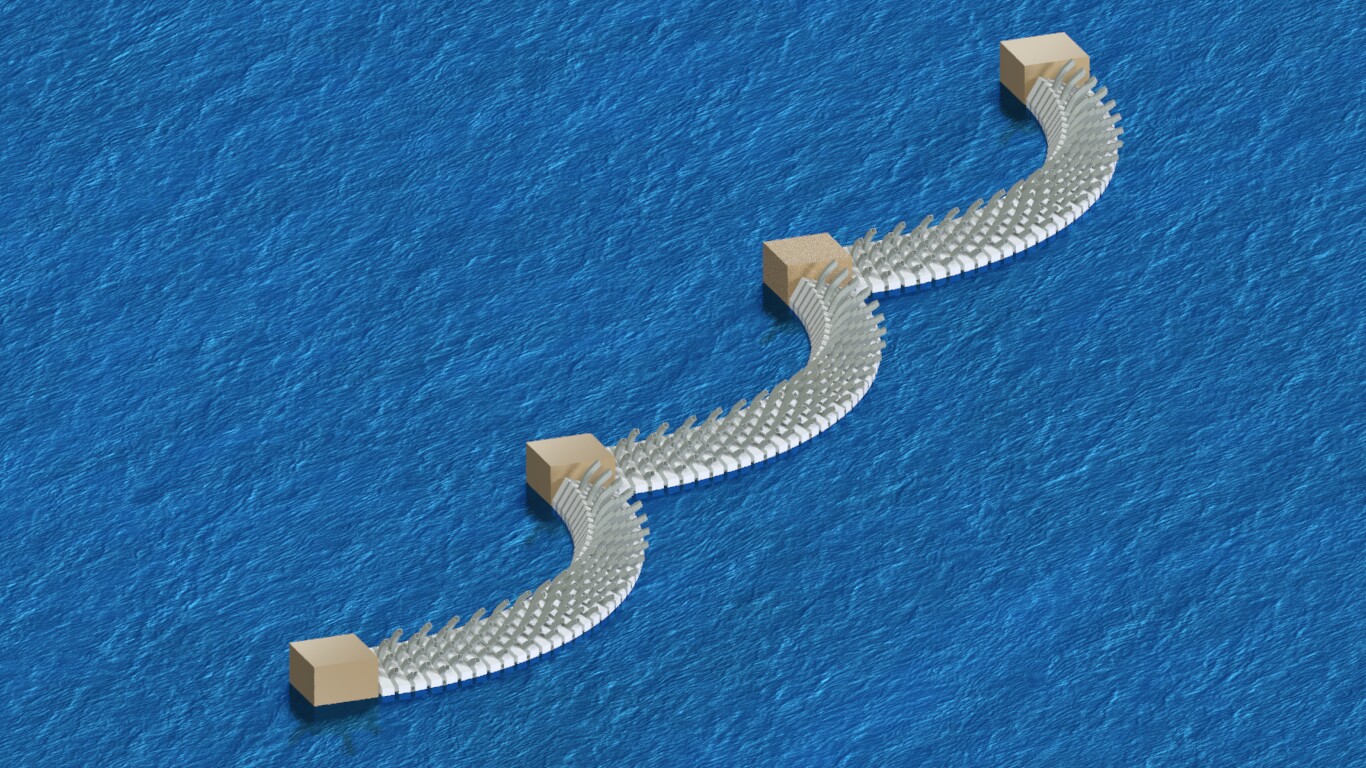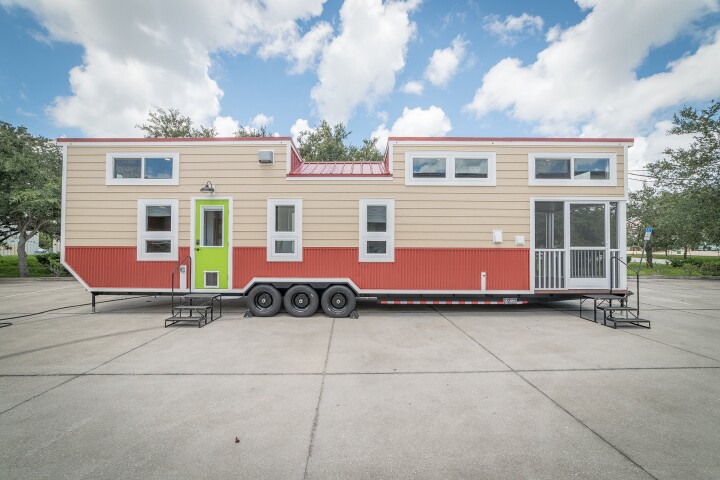Wind storms can cause a great deal of damage to coastal areas, producing waves that erode the shoreline and destroy facilities such as marinas. A newly-proposed "floating forest" could help, however, by blocking both the wind and the waves.
Designed by the University of Queensland's Prof. Chien Ming Wang, the curved floating structure would measure approximately one kilometer in length (0.6 miles). Plans call for it to be anchored offshore of at-risk areas.
One of its key features would be its sloped concrete surface, which would allow waves to non-destructively dissipate their energy by flowing up onto it – much in the same way that drivers of runaway transport trucks can stop their rigs by steering them up onto safety ramps on mountain roads.

Protruding vertically from the structure's surface would be the actual "forest."
Instead of consisting of trees, however, it would be made up of plastic-and-concrete tubes, each one standing 20 meters tall (65.6 ft). While these would be somewhat flexible (to reduce the chances of them breaking), they would still be stiff enough to disrupt the wind, greatly reducing its speed upon reaching the shore. Additionally, the incoming water would be able to flow up into each tube, further helping to dissipate the waves' energy.
The floating forest technology has been patented by the university, with hopes that it could someday be used in cyclone-prone countries such as Bangladesh, Mozambique, Taiwan and the Philippines. In the meantime, a scale model has been built for testing in U Queensland's wave tank.
"Engineers have already developed wave-breakers capable of reducing the height of waves, but there has been nothing until now to break the wind," says Wang. "We're the first ones to place a windbreak on top of the floating breakwater structure."
Source: University of Queensland





